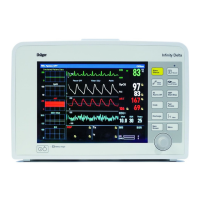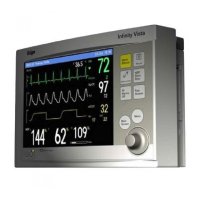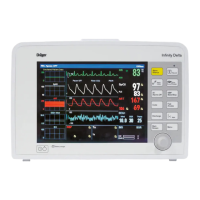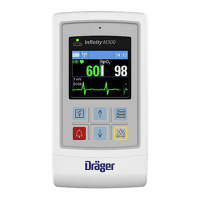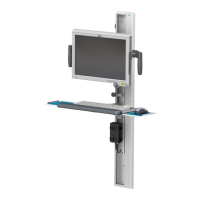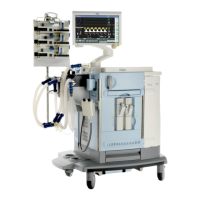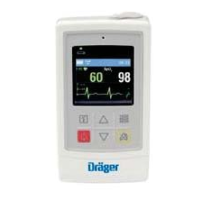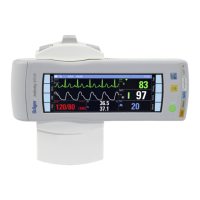14-2 DELTA/DELTA XL/KAPPA VF8
14 I
NVASIVE BLOOD PRESSURE
Overview
The monitor acquires invasive blood pressure (IBP) signals from Y-cables,
hemodynamic pods, or a combination of these devices. A transducer, connected to the
cable or pod/MPod, converts pressure data into electronic signals for monitor use.
These signals are automatically filtered to reduce the artifact generated by the fluid-
filled catheter and tubing system, as well as by motion and catheter fling. The monitor
detects individual beats by establishing thresholds based on running averages of
systolic and diastolic pressures. The monitor can process up to twelve IBP signals to
which it assigns standard, generic, or automatic pressure labels. See page 14-14 to
assign pressure labels. Description of standard and automatic IBP labels follows:
IBP Labels
Label Pressure Type Measured Pressures Measurement Range
ART Arterial Systolic, diastolic, mean -50 to +400 mmHg
NOTE: see status
messages, page 14-20.
LV Left Ventricular Systolic, diastolic, mean
PA Pulmonary Arterial Systolic, diastolic, mean
RV Right Ventricular Systolic, diastolic, mean
CVP Central Venous Mean
RA Right Atrial Mean
LA Left Atrial Mean
ICP Intercranial Mean
ICP2 Intercranial Mean
ICP3 Intercranial Mean
ICP4 Intercranial Mean
CPP Cerebral perfusion pressure Mean
CPP2
CPP3
RA Right atrial pressure
LA Left atrial pressure
GP1 Generic pressure 1 Systolic, diastolic, mean
GP2 Generic pressure 2 Systolic, diastolic, mean
NOTES:
• During PWP measurements, the monitor displays only mean PA pressure.
• The monitor only displays mean pressure if it detects a static pressure. This occurs when a
pulsatile pressure signal's maximum and minimum values differ by less than 3 mmHg.
• If both ART and ICP are connected, the Cerebral Perfusion Pressure (CPP) appears. CPP is
mean ART - ICP.

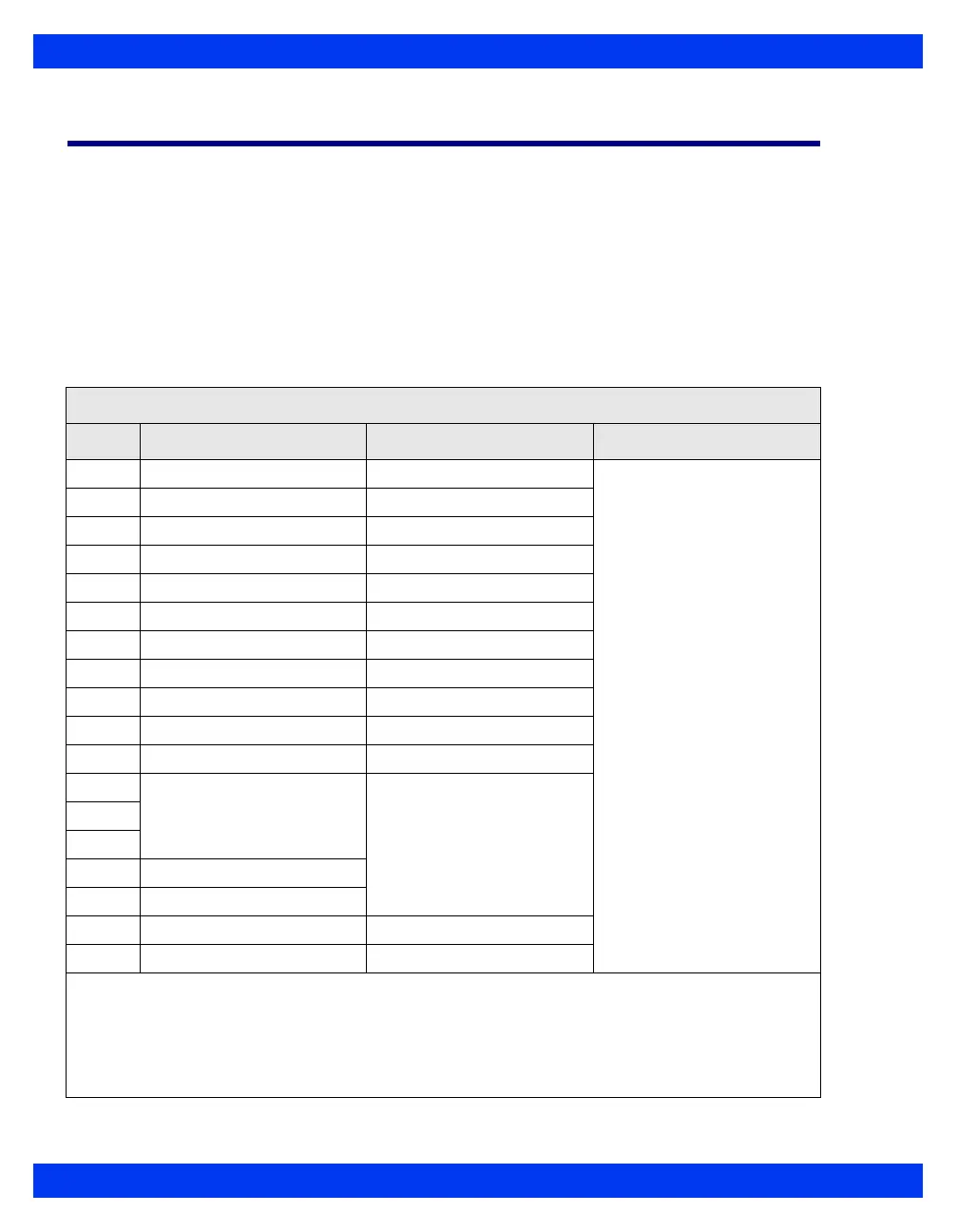